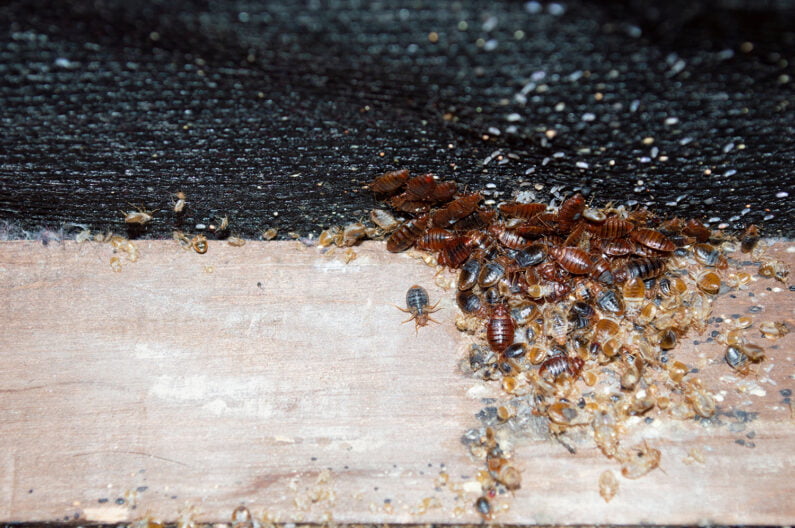This is a question that we get frequently from Pest Management Professionals (PMPs), and rightly so. We all know that homeowners often apply off the shelf insecticides in their attempts to control bed bugs before reaching out to a professional for treatment. Further, chemical applications are most frequently used by PMPs. So, what is the impact of previously applied chemicals on the efficacy of Aprehend?
The bottom line: a study recently published by scientists from Penn State, the University of Kentucky, and the University of Hawaii,* looked in detail at the impact of dry residues from a range of commonly used professional and over the counter pesticides.* The impact of dried chemical residues on Aprehend is minimal, at least in the first 30 days after treatment. Crossfire and Temprid SC residues had no detrimental impact on Aprehend under the conditions of this study. Alpine PT, Bedlam Plus and Spectre 2 SC may reduce the efficacy of Aprehend on wood surfaces, which could require a second application of Aprehend 30 days after the initial treatment IF the infestation was not eradicated by the first treatment.
If you’d like to learn more and see the data, read on.
The good news is that even when Aprehend is applied to fresh residues (1 day after application) of chemical insecticides, efficacy is not impacted. Our studies showed that brief exposure of bed bugs to 1 week old residues resulted in 100% mortality for all combined treatments on both fabric and wood surfaces.
Even 7 weeks after application, there was no impact on efficacy of Aprehend applied to chemical residues on fabric surfaces. However, on wood surfaces Alpine PT, Bedlam Plus and Spectre 2 SC, did reduce bed bug mortality in comparison to the Aprehend® only treatment. This indicates that these products may have some impact on the long-term residual of Aprehend® on hard surfaces.
The Details
Chemical pesticides were applied to fabric and painted wood surfaces at recommended label rate and allowed to dry overnight. The next day, Aprehend® was applied on top of the dry chemical residues. The treated fabric and wood were stored for one week. All chemical pesticides were evaluated for efficacy with and without Aprehend® applied on top. Bed bugs were exposed to the treated surfaces for 15 minutes and then removed from the surface and placed into containers with folded paper harborages. Mortality (death) of bed bugs was monitored daily for 14 days after exposure. The total percentage mortality for each treatment (total of 30 bed bugs per treatment) is shown in the graphs below. The speed of death as measured by mean survival time varied from 1.3 days (Temprid SC) to 9.3 days (Bedlam Plus), with Aprehend® treatments averaging 4.6 days.
The Results
The data in the graphs below show us four things – a) the efficacy of Aprehend® in comparison to a range of commonly used chemicals, b) the impact of application of Aprehend® over dried residues of these chemicals, c) the impact of surface type (wood or fabric) on efficacy, d) residual efficacy of these chemicals 7 weeks after application.
Fabric surfaces
Comparative efficacy of Aprehend
When applied to fabric surfaces Crossfire, Temprid and Aprehend alone all resulted in 100% mortality of bed bugs when bed bugs were exposed 1 week after the pesticide application.
When bed bugs were exposed to the same fabric surfaces 7 weeks after the initial spray application, only Temprid SC resulted in 100% mortality, although Crossfire and Aprehend both resulted in 97% mortality. All other single pesticides resulted in less than 60% mortality.
Impact of previously applied chemicals on efficacy of Aprehend
All treatments where Aprehend® was applied on top of chemical residues resulted in 100% mortality at 1 week and 7 weeks after application. The only exception was when Aprehend was applied on top of EcoRaider, which resulted in 87% mortality, which is not significantly different to the other treatments. This indicates that there is no impact of chemical residues on the efficacy of Aprehend on cloth surfaces
Residual efficacy of treatments over 7 weeks
The residual efficacy of Crossfire, Temprid and Aprehend remained between 97 and 100% seven weeks after spray application. The efficacy of all other chemical residues was reduced 7 weeks after application. Mortality following exposure to Bedlam Plus and EcoRaider was no different to the untreated controls.
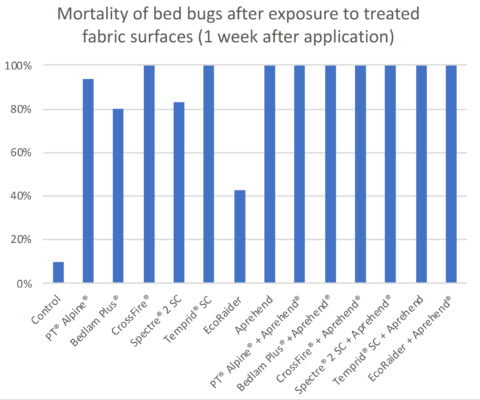
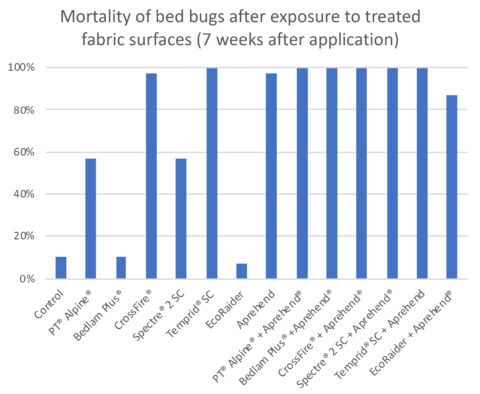
Painted wood surfaces
Comparative efficacy of Aprehend
Efficacy on wood surfaces was considerably lower than that observed on fabric surfaces for all pesticides except Temprid SC. Efficacy of Aprehend was reduced from 100% 1 week after application to 83%, and all other single pesticides resulted in less than 40% mortality.
Seven weeks after application mortality of bed bugs exposed to surfaces treated with Temprid SC and Aprehend was 87 and 76% respectively. Mortality following exposure to Crossfire was reduced to 57% was less than 30% for Alpine PT, Bedlam Plus and Spectre 2 SC.
Impact of previously applied chemicals on efficacy of Aprehend
Mortality of bed bugs after exposure to Aprehend on top of chemical residues was equal to exposure to Aprehend alone one week after the application. However, bed bugs exposed to these surfaces 7 weeks after application showed lower mortality that the treatment with Aprehend alone. This indicates that there may be some reduction in efficacy of Aprehend if applied to painted wood that has been previously sprayed with Alpine PT, Bedlam Plus and Spectre 2 SC.
Residual efficacy of treatments over 7 weeks
Seven weeks after application mortality of bed bugs exposed to surfaces treated with Temprid SC and Aprehend was 87 and 76% respectively. Mortality following exposure to Crossfire was reduced to 57% was less than 30% for Alpine PT, Bedlam Plus and Spectre 2 SC.
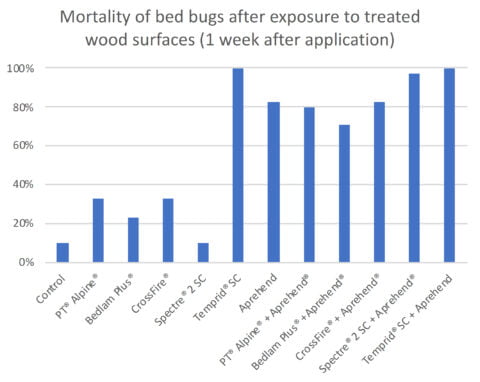
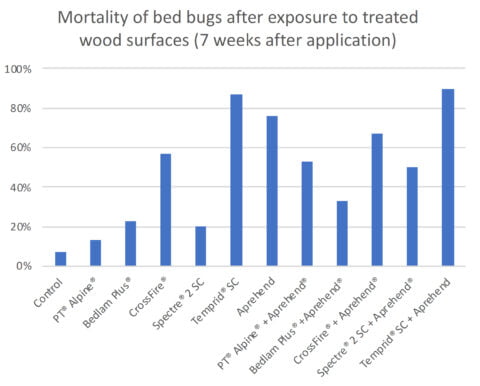
Check out more resources here and Aprehend products here. Give us a call to discuss how to work Aprehend into your bed bug protocol.
*Effects of Chemical Insecticide Residues and Household Surface Type on a Beauveria bassiana-Based Biopesticide (Aprehend®) for Bed Bug Management, Insects 2021, 12(3), 214; https://doi.org/10.3390/insects12030214

